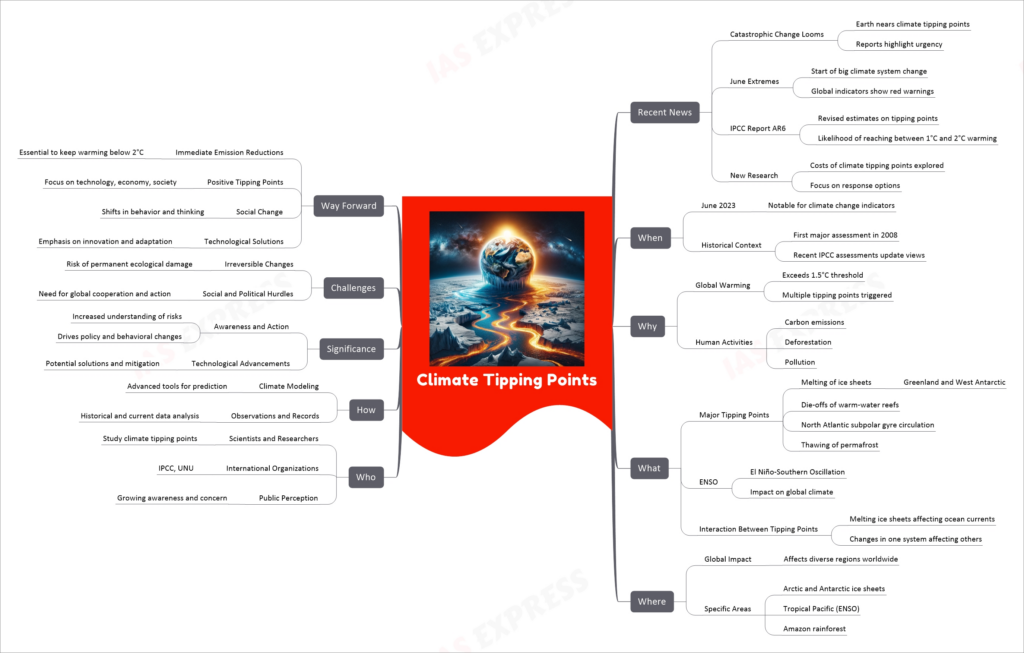Climate Tipping Points

Climate tipping points refer to critical thresholds in the Earth’s climate system, beyond which significant and potentially irreversible changes occur. Recent news highlights an increased likelihood of reaching these points due to global warming exceeding 1.5°C. Key tipping points include the melting of major ice sheets, changes in ocean currents, and the thawing of permafrost. The interaction between different tipping points, like the El Niño-Southern Oscillation (ENSO) and ice sheet melting, can lead to cascading effects. Awareness of these risks is growing among scientists, international organizations, and the public, leading to calls for immediate emission reductions and the exploration of technological solutions and positive social changes to mitigate these effects.
If you like this post, please share your feedback in the comments section below so that we will upload more posts like this.

